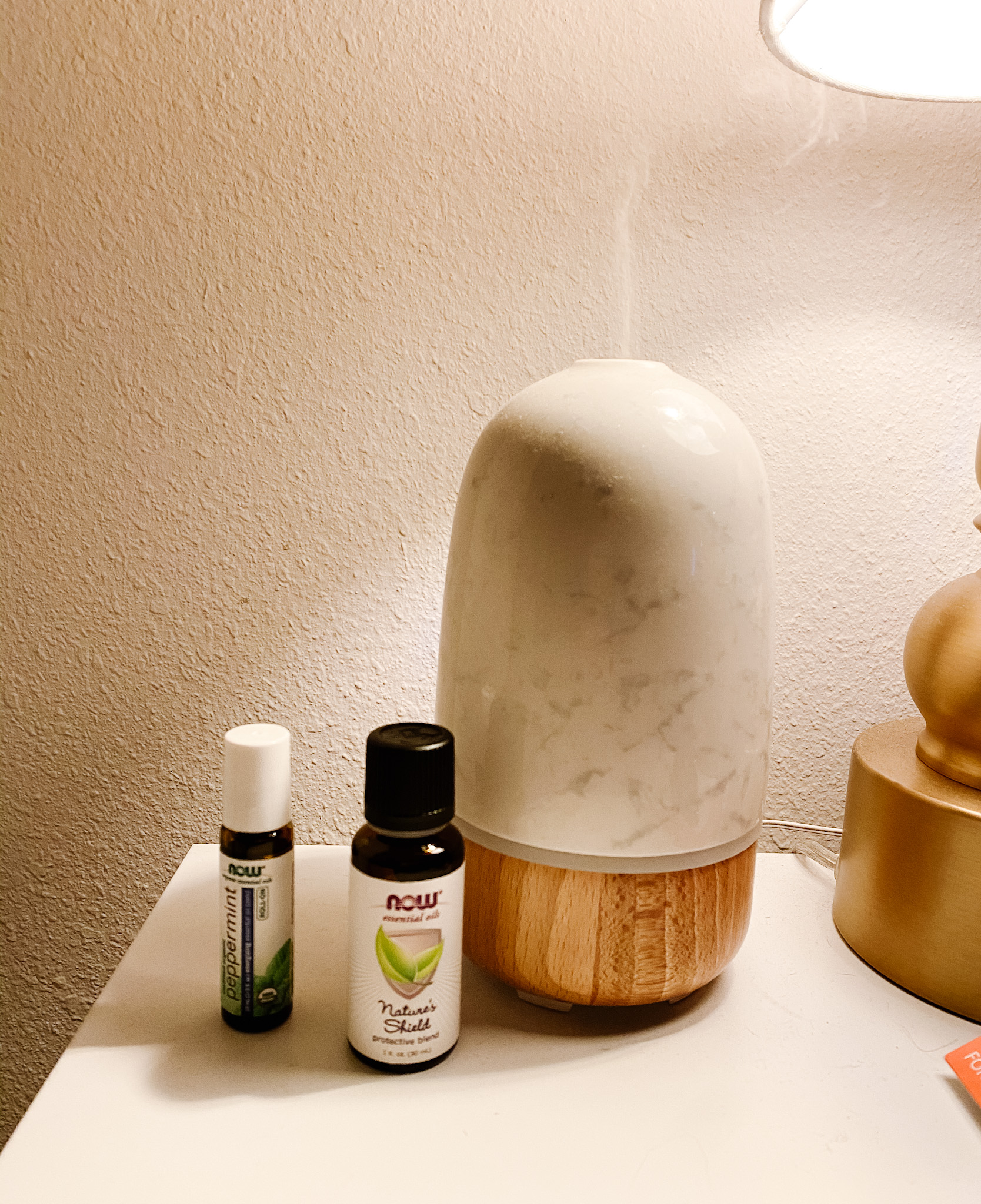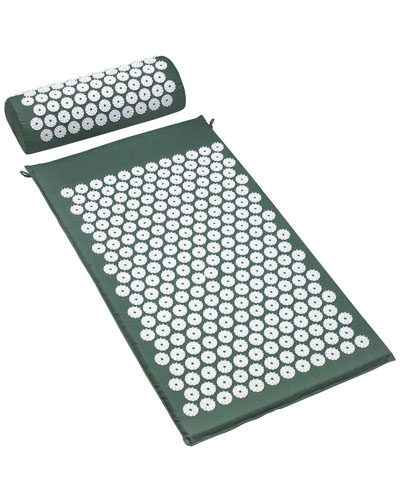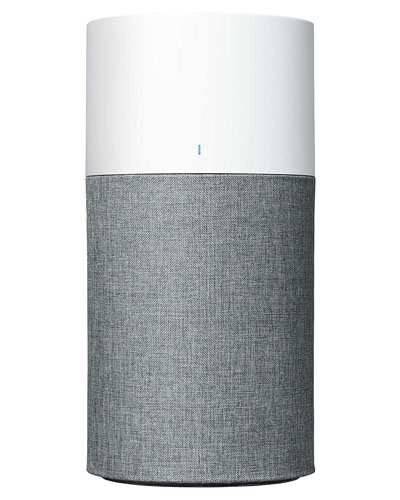You might already know I’m a wellness try-hard if you’ve read about how I washed my face with only raw honey for two weeks or synced my entire life to my cycle. I’ve added adaptogens to my coffee, perfected a plant-based pizza, and even went to a nutrition school. I quite literally would try anything and everything in the name of physical and mental health. As the pandemic left my anxiety at an all-time high and my usual health go-to’s closed down (I miss you, barre studio!), I knew I had to work a little extra to take care of my mind and body through this tough time. In other words, it’s time to call in the big guns. The good news: I’ve learned that there are many self-care practices and wellness treatments that are not only easy to replicate at home, but way cheaper than going to fancy spas or expensive studios.
turns out, you don't have to spend all of your free time cleaning
Just an FYI: at The Everygirl, we’re big proponents of being your own guinea pig and doing your own research when it comes to what’s right or wrong for your body; what works for me may not work for you, and vice versa. My favorite part of health is that it’s a life-long quest to discover new ways to continue taking care of my body; wellness is empowering when you realize that only you can heal yourself. Here are six wellness treatments that I was interested in trying at home and my personal experience with each of them.
If any of these treatments sound interesting to you, talk to your doctor or try for yourself, but only do whatever feels right for you.
1. Red Light Therapy

Dubbed “the fountain of youth” by Glamour Magazine, red light therapy has been popping up everywhere from dermatologist offices to fitness centers. “Red light therapy speeds the healing of the body, reduces inflammation, and helps hydration levels in the skin,” said Joanna Vargas, celebrity facialist (and Everygirl editor girl-crush), to Shape Magazine. You might have seen the buzz-worthy wellness trend (which actually came from NASA) popping up in spas and Star Wars-level face masks, but this modern-age technique has more than just beauty benefits.
HOW IT WORKS
To get scientific, red light is said to work by producing a biochemical effect in cells that strengthens the mitochondria, and therefore, cells can repair themselves and work more efficiently. In other words that weren’t on your ninth-grade biology quiz, it has major skin benefits (since even a flawless glow and youthful complexion come from a cellular level), but is also said to heal scars and wounds, promote collagen production, ease joint or muscle pain, speed recovery, and boost performance. While more research needs to be done, there’s enough buzz around red light therapy that we can bet it’s here to stay.
MY EXPERIENCE
I’ve seen red light therapy in skincare for a couple of years now, but I got really curious when I heard wellness icons like Dave Asprey and Dr. Will Cole swear by it for a wide range of health benefits. There are many ways to use red light at home, whether it’s red light bulbs, red light lamps, or devices for treating the skin. I decided to go all out and try a panel so that I could try it both for skin-boosting benefits, as well as targeting areas for muscle recovery. I’ve only used it for a few weeks now, but I have noticed subtle differences in neck pain I often get after waking up, and I also notice a difference in my sleep, probably thanks to the melatonin-stimulating effects. As for skin, call it a placebo effect, but I swear my skin is way more glowy and breakouts go away quicker, though I can’t be sure if this is because of the red light or if my skin is just having its moment.
2. Acupuncture Mat

You’ve probably heard of acupuncture, if not already tried it yourself. The treatment originated in China around 6000 BCE (they knew what they were talking about!) to relieve pain, cure disease, and improve general health. Thousands of years later, it’s used all over the world for many of the same purposes. If you’re not familiar with acupuncture, it’s an approach to treating health concerns or symptoms by triggering specific points with needles. If the word “needles” is enough to make you queasy, don’t worry. It’s a minimally invasive method to stimulate areas of the skin’s surface, which methodically influences tissues, glands, organs, and various body functions. Most people claim that they don’t feel any discomfort, and it has been used for treating everything from allergies to depression to PMS to migraines. Fascinating, right!?
HOW IT WORKS
I heard about a way to practice acupuncture at home for an option that’s more affordable (and safe during a pandemic): an acupuncture mat. It’s exactly what it sounds like: a mat that contains tiny points to stimulate the nerves on the skin. So do these at-home versions really pack all the benefits of tried-and-true acupuncture? The short answer: no. Since a mat doesn’t give the option for targeted and specific treatments, it likely won’t have the wide range of benefits that going to an acupuncturist would have. However, these mats have been said to help neck pain, headaches, back pain, tension, and even insomnia. For maximum results, it’s recommended you lay on the mat for 10-20 minutes every day (you can also try standing or sitting on it). To start out, spread the mat on a bed or sofa and wear a thicker shirt. Once you feel used to the points, put the mat on the floor for a harder surface and opt for a thin shirt or a bare back.
MY EXPERIENCE
I first got an acupuncture mat as a Christmas present for my mom to help her back pain. Spoiler alert: I loved it so much that I got one for myself (Merry Christmas to me!). When using the mat, I instantly felt less shoulder tension, decreased neck pain, and way better overall. Even if it’s not quite as good as the real thing, I still give the mat a 10/10 for what a non-painful, non-invasive, affordable at-home treatment can do. I try to use it as often as possible, which is typically a few times a week (it’s the most productive way I binge Netflix), and feel comfortable with a thin tee and placing the mat on the ground. When I feel a headache coming on or notice I have more neck and shoulder tension than usual, I make sure to spend 10-20 minutes on the mat more consistently and it always helps.
3. Cool Therapy

If you’re into wellness trends, you’ve probably heard of cryotherapy. Cryotherapy is the practice of methodically using freezing (or below freezing) temperatures for a wide range of health benefits like pain relief, weight loss, reduced inflammation, lowered anxiety, and improved skin health. It turns out cold therapy also has a long history of positive results: the Egyptians used cold to treat injuries and inflammation as early as 2500 BCE. Many other cultures around the world have utilized cold temperatures to heal the body. For example, Hippocrates was said to have used ice and snow to treat inflammation in ancient Greece. More recently, Dutch extreme athlete Wim Hof (accurately nicknamed “The Iceman”) helped popularize cold therapy around the globe.
HOW IT WORKS
Cryotherapy has been used in many different ways, from localized cryotherapy (think: putting an ice pack to an injury to reduce inflammation) or immersing the entire body in cold temperatures with an ice bath, freezing body of water, or chamber. Exposure to freezing temperatures is considered beneficial for many reasons, whether it’s numbing an irritated nerve, releasing adrenaline and endorphins (which boosts mood), or decreasing inflammation (both in the localized spot or throughout the body). While applying localized cryotherapy (like ice rolling) for a short amount of time is typically harmless, talk to your doctor if you’re interested in trying a whole-body cryotherapy treatment.
MY EXPERIENCE
So it has the history (and studies) to back it up, but a cryotherapy machine isn’t exactly in my budget (you know, just a few thousands of dollars off). Luckily, we don’t need fancy machines to get cold temperatures. My doctor recommended 10+ seconds of cold water at the end of my shower to help when I’m feeling anxious. It is not the most relaxing experience, but since ending my showers with a few seconds of cold water and focusing on my breath to get me through, I have noticed a major in how I handle stress throughout my day. I’m much more likely to feel calmer and less overwhelmed, even with an overcrowded to-do list. Other noticeable benefits: I’m not as tired throughout the day (AKA no more afternoon slump!) and my skin looks glowier.
Speaking of skin: I’m also a big fan of keeping skincare tools in the freezer for the skin-health benefits of cold therapy in a much more convenient and affordable way. Especially if a cold shower feels a little too unpleasant for you (I feel you), skincare is the perfect way to fit in some benefits of cold therapy. Try a tool specifically for ice rolling, or keep anything from spoons to a jade roller in your freezer to reap the benefits.
4. Air Purifying

With all the extra time spent at home, it’s no surprise that we’ve gotten curious about how healthy our homes really are. Wiping the counters, sweeping the floors, and washing the sheets are not necessarily “wellness trends” (they’re just adulting basics), but there is an area of at-home cleanliness that’s become big in the wellness world: cleaning the air.
HOW IT WORKS
Air purifiers use filters and fans to remove harmful particles like dust, bacteria, allergens, smoke, and pollen, and circulate the purified air back into the room. Since indoor air can contain up to five times more levels of certain pollutants than outdoor air, it’s no wonder this trend has taken off. However, its efficacy can depend on your space, concerns, and which type you get, so do your research ahead of time.
MY EXPERIENCE
I live in a small space (shoutout to my studio apartment) and a big city (even when I’m getting “fresh air” in Los Angeles, it doesn’t always feel that fresh, if you know what I mean). After researching air purity, I thought an air purifier would be beneficial for my small space (if I’m going to be inside 24/7, the air better be high-quality). I also bought a few air-purifying plants to fill my home (bonus points that they make for good decor). I swear adding plants to my home helped me feel more relaxed too. Since I cannot test the exact difference in the air quality, it’s hard for me to say how much difference this makes in my life and I did not feel noticeably different. But I do love knowing that I’m doing everything I can to make the home I’m now spending 24/7 in as healthy as possible.
5. Lymphatic Massage

Is it just my Instagram feed, or is every wellness blogger getting a lymphatic drainage massage? It’s even been called “the New Hollywood Trend,” and for good reason: Selena Gomez has a go-to lymphatic drainage massage therapist, and Chrissy Teigen was caught rocking a lymphatic drainage massage jacket (like, where can I get one of those?). The name sounds weird, but it’s just a form of massage that encourages the movement of lymph fluids around the body.
HOW IT WORKS
The relaxing practice is often used to treat acne, cellulite, digestive issues, puffiness, stress, inflammation, insomnia, migraines, and certain health complications. How? The lymphatic system consists of lymph vessels, ducts, nodes, and other tissues, and is located underneath the skin. Think of its function kind of like the garbage disposal of the body (gross analogy, I know): it gets rid of “waste” in the body, whether it’s toxins, bacteria, or excess fluid. The lymph is a collection of the extra fluid that moves through the arteries and tissues to clean them out, before draining them through the lymphatic system.
However, there is no pump to push the lymph through the body, and it relies on our muscle action to maintain fluid movement. Therefore, any kind of manual “drainage” (I know, so much imagery about that garbage disposal) is said to work by moving the lymph to the lymph nodes to eliminate the toxins and bacteria. While there is some controversy around the massage style, it makes sense to me that this system is crucial to the body’s health, and stimulating it through methodical massage could have many benefits.
MY EXPERIENCE
Lucky for lymphatic systems (and the stay-at-home order), we don’t need a fancy spa or expensive masseuse to reap the benefits. I use my trusty Gua Sha for facial massage and a dry brush for the body. Gua Sha (the name comes from a Chinese word for “scraping”) is one of the must-have products in my beauty routine. The effects of facial lymphatic drainage are extreme, IMO: even after five minutes of Gua Sha, my face is noticeably more contoured. My under eye circles are less noticeable, my cheekbones pop, and my eyebrows look more structured and even sit higher. Can Kim K’s Kontouring Kits do that?
Also, when I went for a facial at Skin Camp (pre-pandemic of course), my facialist explained that facial massage is not only beneficial for de-puffing the face, but facial lymphatic drainage also helps with breakouts since it’s draining bacteria and toxins that result in clogged pores. Crazy, right!? Dry brushing is another personal favorite practice that’s originally from Ayurveda and has been around for centuries. The coarse bristles on the brush are said to stimulate the pores and promote lymph flow. When routinely dry brushing, I not only notice a huge difference in my skin (it’s as smooth as a baby’s!), but I swear I feel an immediate boost in my mood. Maybe it’s just that taking time for myself feels good, or maybe it’s because dry brushing stimulates the nervous system. Either way, lymphatic massage has officially become a must in my wellness routine.
6. Aromatherapy

Whether you’re an essential oil fanatic or love a lavender-scented detergent for bed sheets, you’ve probably experienced aromatherapy in one way or another. The holistic healing treatment uses natural plant extracts (or essential oils) for health benefits and overall wellbeing. I’m sure it comes as no surprise, but aromatherapy is not a new trend. Ancient cultures in China, India, and Egypt incorporated aromatic plant components for medical, religious, beauty, and psychological benefits. The ancient tradition is said to have benefits ranging from improved sleep quality, stress reduction, fewer headaches, better digestion, and balanced immunity.
HOW IT WORKS
Get ready for some more scientific words. Aromatherapy is said to work by stimulating smell receptors in the nose, which sends signals through the nervous system to the limbic system. The limbic system is the part of the brain that controls emotions and behavioral response. In other words, a strong lavender scent might signal to the brain that it’s time to relax. Inhaling essential oils are also said to have many benefits for physical health because molecules inhaled through the nose are carried into the lungs and respiratory system, so could affect the body internally as well.
When placing it on the skin instead of inhaling, it is said that the active chemicals are absorbed by the skin to affect certain parts of the body (which is why essential oils have been used to treat anything from cramps to headaches). You can practice aromatherapy by diffusing oil, diluting it to use on the skin (mix it with another oil like coconut and don’t try if you have sensitive skin or allergies), or taking a deep breath to inhale the scent. It turns out your sniffer is pretty powerful for overall health and wellbeing.
MY EXPERIENCE
In my opinion, even just one deep inhale of essential oil helps my body ease tension and immediately boosts my mood. I swear I feel calmer and fall asleep easier when spraying lavender oil on my pillow or diffusing it in the air before bed, but at the very least, my bedtime rituals feel more luxurious (how bougie to make everything smell like lavender!?). My second favorite aromatherapy hack is rolling on peppermint oil to help with headaches. I get pretty chronic headaches from (I’m guessing) a combo of staring at a computer all day, too much caffeine, and too little sleep. Rubbing peppermint oil into my temples really helps ease my tension and headaches.
Please consult a doctor before beginning any treatments. Always seek the advice of your physician or other qualified health provider with any questions you may have regarding a medical or mental health condition. Never disregard professional medical advice or delay in seeking it because of something you have read in this article.



 "
"

















